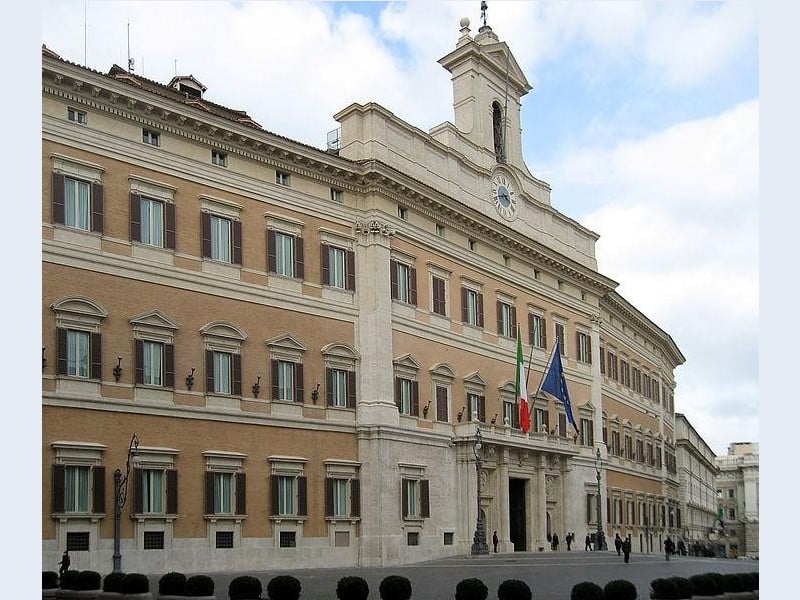Palazzo Montecitorio
Montecitorio Palacae overlooking Parliament Square on one side, and Monte Citorio Square on the other one. It's seat of the Chamber of Deputies of the Italian Republic. The origin of the name seems to date back to the Roman era of electoral assemblies ("mons citatorius"). In 1653, Pope Innocent X commissioned to Gian Lorenzo Bernini, a residence for the Ludovisi family, but no trace remains from the original project. The facade follows the curved road and rough-hewn stone elements simulate the rock. The work was interrupted and resumed by the architect Carlo Fontana, who guarded convex facade and added the belfry. In 1696, they settled there the papal courts, then the Governor of Rome and the police. With the Unification of Italy, the building was intended to house the Chamber of Deputies, inaugurated in 1871: designed the House of the Assembly, semicircular tiers, an iron framework covered with wood. Subsequent expansion works were entrusted to the architect Ernesto Basile, a leading exponent of the Italian Liberty, who lifted up the new building with four corner towers clad in red brick and travertine; placed inside the classroom sessions, illuminated by an extraordinary skylight, the famous "Velario" by Giovanni Beltrami, and the great hall called "Ocean" (from furniture typical style naval), informal center of political Italian life. The most important rooms are located on the second floor; through a monumental staircase leads to the so-called "Corridor of Busts", along which are exposed thirty bronze and marble busts of distinguished presidents of the Chamber. The Palace houses more than a thousand paintings and sculptures dating from the sixteenth to the twentieth century, several thousand engravings and prints, a core of archaeological finds and a fair amount of artistic objects, from various Superintendents.

